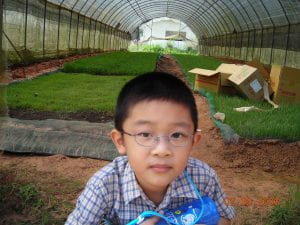“To understand the present and anticipate the future, one must know enough of the past. Enough to have a sense of the history of the people. One must appreciate not merely what took place but more especially why it took place and in that particular way. That is true of individuals, as it is for nations”
—Lee Kuan Yew, during the PAP’s 25th Anniversary Rally, 1980
In the previous post, we learnt about the 30by30 goal. Before we think about how this goal can be achieved, let us know more about the context of food production in Singapore. How was the farming scene like, and how did the idea of food security come about?
The Japanese Occupation of Singapore was a very trying time. Growing up, I heard stories of my grandparents growing tapioca for sustenance. What was the “new normal” once the war ended? Here’s what I understand (from Chou 2014 ) about the local farming situation from the post-war years. Most farms were family-run. Being smaller, these farms were better able to react to changes in the market as compared to commercial ones. Such farms were able to meet local needs up to the 80s. However, pig farms were relocated to Punggol in the 70 due to concerns that wastewater would affect local water catchments (Tortajada et al, 2013).
However, 1984 marked a change in the government’s priorities (Tortajada & Zhang, 2016). In line with the transition to a knowledge-based economy, Primary Production Department Director, Mr. Goh Keng Swee, announced that Singapore no longer aimed to be self-sufficient for food. Instead, Singaporeans should specialise in areas higher up the value chain and rely on trade to meet other needs. The last pig farms in Punggol closed in 1989. Many areas involved in farming were converted into agrotechnology parks. Through these parks, modern farms can adopt each other’s best practises and technology more easily, resulting in higher and more sustainable yield.

Author at an agrotechnology park in 2006. Unfortunately, the only pictures I have are from that field trip when I was seven.
So what changed since 1984 that raised the importance of food security?
In 2007, there was a global food crisis. Due to drought and the shift to biofuel production, food prices rose dramatically leading to panic buying. The government highlighted that there was a national stockpile of rice – this was brought up again this year.
My biggest takeaway from the history of the food supply in Singapore is the importance of the government’s direction. 1984 showed that a decision to end self-sufficiency is a lot easier than efforts to raise it since 2007. The government needs to be clear what the goal is post-2030. T Ambiguity will only result in farmers hesitating to seize opportunities due to fears of being left in the lurch as pig farmers were back in the late 80s.
I understand why pig farming was phased out in the 80s. There was a risk that farmers would be left behind in Singapore’s march towards progress, creating a rural-urban divide. As they say, you can’t make an omelette without breaking a few eggs. Had the status quo been kept, the agriculture scene in Singapore may not have evolved into the technologically intensive scene we have today. It is also not fair to say that we could have maintained our sufficiency in pork as our population has almost doubled since then. However, keeping some sort of target for food sufficiency in mind would have been good. In hindsight, given the importance attributed to water security, the laissez-faire approach to food security seems out of character.
What do you think about the decision to shift away from self-sufficiency in the 80s? Was it a misstep, or was it more important that all Singaporeans shifted to jobs further up the value chain? What are your thoughts on the number of fish and egg farms in relation to the percentage supplied locally? Let me know in the comments.
Bibliography
Tortajada, C., Joshi, Y. K., & Biswa, A. K. (2013). The Singapore water story: Sustainable development in an urban city-state (p. 142). New York, NY: Routledge. Call no.: SING 363.61095957 TOR.
Tortajada, Cecilia, and Hongzhou Zhang. “Food Policy in Singapore.” Reference Module in Food Science, 2016, doi:10.1016/b978-0-08-100596-5.21083-4.
Chou, Cynthia. “Agriculture and the End of Farming in Singapore.” Nature Contained: Environmental Histories of Singapore, by Timothy P. Barnard, NUS Press, 2014, pp. 216–240, muse-jhu-edu.libproxy1.nus.edu.sg/chapter/1096622.
Taiganides, E. P. Pig Waste Management and Recycling: the Singapore Experience. International Development Research Centre, 1992.
Recent Comments